The Hellers 'Singers, Talkers, Players, Swingers and Doers'
Posted April 28th, 2010 by kevsterThis 1968 LP stands as a particularly strange UFO in the UFO-filled sky of the psychedelic and kitsch record collector.
In 1968, producer Enoch Light commissioned an LP from Hugh Heller, a publicist who used to put together albums of skits and short musical spoofs his agency privately distributed to industry people.
Heller teamed up with his agency's commercial jingle composer Dick Hamilton. Together, they wrote 12 light comedy tracks and brought in visionary electronician Robert Moog (inventor of the Moog synthesizer) to give their project a space-age feel.
This half-hour of material has aged tremendously, but to most connoisseurs of the genre, that is where its value resides.
You'll know the vocal in the featured track "Life Story", as it was lifted by Grandmaster Flash for his "Adventures on the Wheels of Steel" track.
Richard Hawley 'Truelove's Gutter'
Posted April 28th, 2010 by kevster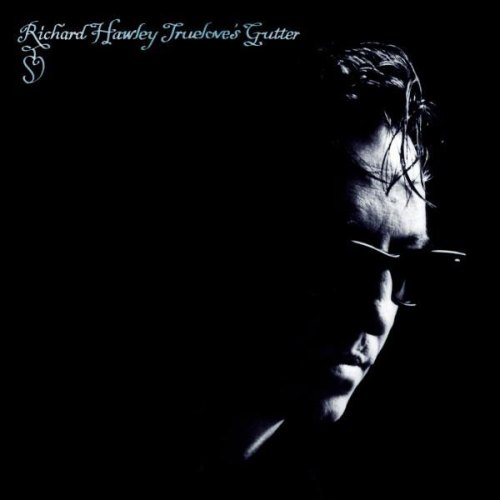
Richard Hawley has always shown a penchant for writing deeply evocative and emotional songs about places, people, and situations. His first couple of recordings, especially 'Lowedges', reflected his obsession with lushly orchestrated pop songs and a production style that extended a song far beyond its margins and into the listener's world with a near visual sensibility.
On 'Truelove's Gutter', Hawley has dug the well much deeper and brought forth a spring of new ideas in his singing, writing, and production, but paradoxically, has done so with less.
The album is more sparse than anything he's released. Its eight songs have a decidedly late-night feel. The grand sweeping orchestral strings of his last two albums have been replaced by a chamber section and odd instrumentation that add real intimacy to the proceedings.
These songs reflect his own experiences, or the trials and tribulations of friends. His gorgeous melodies shine through brighter in songs that are nakedly tender and unflinching yet are musically more sophisticated, adding to their depth of field.
"Open Up Your Door" (featured here) would be just a pop song were it not for lyrical concerns underscored by the only orchestral arrangement on the set: it's a plea for reconciliation by a husband who confesses and owns his shortcomings, while professing his all-consuming love for his spouse in the wake of a dispute as strings swell and punctuate them in the bridge.
The melody is infectious, and Hawley's soaring baritone evokes the power of Roy Orbison's tenor.
'Truelove's Gutter' is a singular moment in Hawley's catalog that displays the maturity of all his gifts. It is quietly passionate, graceful, elegant, utterly moving, and unequivocally beautiful in its honesty and sophistication. He's realized an ambition here that is artful and singular.
Dirty Dozen Brass Band 'Medicated Magic'
Posted April 28th, 2010 by kevster_1272465778.jpg)
New Orleans' most famous, well-traveled, and recorded brass band celebrates its 25th anniversary with its ninth release.
Best known in rock circles for contributions to albums from the Black Crowes, Elvis Costello, and especially Widespread Panic, the hotshot horn men offer few surprises on this disc predominantly comprised of popular Crescent City classics.
But why bother stretching boundaries when their sound remains unique, stimulating, and inspiring?
Guests range from sacred steel guitar master Robert Randolph -- whose soaring, hair-raising solos on three tracks infuse even more goosebumps than the already nail-biting musicianship -- to Dr. John on vocals and piano, and sexy chanteuse Norah Jones gets slinky on the most sensuous version of "Ruler of My Heart" ever recorded.
No matter how often you've heard these tunes, the Dirty Dozen's crackling second-line rhythms, bumping tuba basslines, and uncanny ability to shift from boiling low-down gumbo to cool jazz make the versions here essential listening. "It Ain't Nothin' but a Party," as they say in the appropriately titled opening track.
Donald Fagen 'The Nightfly'
Posted April 23rd, 2010 by kevster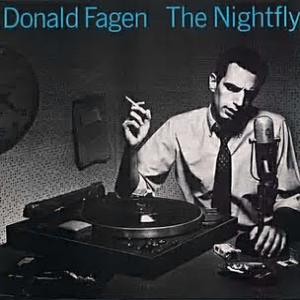
A portrait of the artist as a young man, The Nightfly is a wonderfully evocative reminiscence of Kennedy-era American life; in the liner notes, Donald Fagen describes the songs as representative of the kinds of fantasies he entertained as an adolescent during the late '50s/early '60s, and he conveys the tenor of the times with some of his most personal and least obtuse material to date.
Continuing in the smooth pop-jazz mode favored on the final Steely Dan records, 'The Nightfly' is lush and shimmering, produced with cinematic flair by Gary Katz; romanticized but never sentimental, the songs are slices of suburbanite soap opera, tales of space-age hopes (the hit "I.G.Y.") and Cold War fears (the wonderful "The New Frontier," (featured here) a memoir of fallout-shelter love) crafted with impeccable style and sophistication.
Peter Gabriel 'Scratch My Back'
Posted April 23rd, 2010 by kevster
Considering the slow trickle of completed albums he has released since becoming a superstar in 1986 -- just two albums of songs with vocals, paired with two albums of soundtracks and two live records -- deliberate is expected from Peter Gabriel, so the slow, hushed crawl of Scratch My Back is no shock.
Designed as the first half of a two-part project where Gabriel would cover 12 different artists who would then return the favour by recording their own versions of Gabriel’s compositions -- the counterpart album naturally bearing the title I’ll Scratch Yours -- Scratch My Back divides neatly between six songs from his peers (Bowie, Paul Simon, Randy Newman, Neil Young, Lou Reed, David Byrne) and six songs from younger artists (Radiohead, Arcade Fire, Stephin Merritt, Bon Iver, Elbow, Regina Spektor).
Gabriel doesn’t dodge familiar tunes, choosing to sing “Heroes” and “Street Spirit (Fade Out),” but he twists each tune to his own needs, arranging everything with nothing more than piano and strings, a change that’s almost jarring on Simon’s “The Boy in the Bubble,” yet it stays true to the undercurrent of melancholy in the melody.
Immediate it may not be but fascinating it is, and after hearing Gabriel turn all 12 of these songs into something unmistakably his own, the appetite is surely whetted for its companion piece.
Nichelle Nichols 'Down To Earth'
Posted April 23rd, 2010 by kevster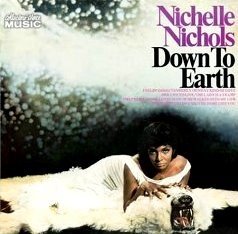
Although arguably best-known for her portrayal of communications officer, Lieutenant Nyota Uhura on the original sci-fi television program Star Trek, Nichelle Nichols is likewise a formidable vocalist.
Her abilities actually predate her acting prowess, as she was performing in nightclubs and had garnered a solo spot during a brief stint with Duke Ellington & His Orchestra, all of which she accomplished before 1960.
Concurrent with her work on Star Trek, Nichols was recording for Epic Records, releasing a 45 rpm featuring "Know What I Mean" b/w "Why Don't You Do Right" in 1967. She then teamed up with jazz arranger Gerald Wilson to create Down to Earth.
Her tremendous talents stylistically run the gamut from the up-tempo and soulful "Feelin' Good" to the torch balladry of "Tenderly" and the touching "The More I See of You." She effortlessly takes on "The Lady Is a Tramp," adding a few hip and timely humorous asides. The lesser-known title "You'd Better Love Me" and the cover of Georgia Gibbs' "Home Lovin' Man" are brought to life with equal aplomb.
A nice little curio.
Lene Lovich 'Stateless'
Posted April 23rd, 2010 by kevster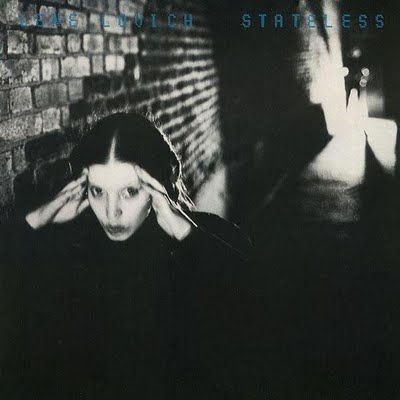
One of Stiff Records' most stable staples, the truly alternative Lene Lovich laid much of the groundwork for an entire generation of singers left to pick up the pieces in the wasteland of the post-punk era. Her stunning debut, 1979's 'Stateless', was so unique, so vibrant, and her vocal stylings so unusual that the LP not only put her right at the front of the pack of nascent new wavers, it also sounded a commercial death knell of sorts, relegating her to the realms of novelty acts -- at least as far as the mainstream was concerned.
Re-recorded from the demo that landed her a deal in the first place, a unique rendering of the bubblegum puff piece "I Think We're Alone Now" (featured here) provided such propulsion that its B-side, the now-classic "Lucky Number," was itself then re-recorded, to land Lovich a Number Three U.K. hit in early 1979.
Elsewhere, the darkly sinister "Home" played off the rumors concerning Lovich's exotic Eastern European background (she was actually from Detroit, but she could fake a great accent). The piano-led Patti Smith-y "Too Tender (Too Touch)" allowed Lovich to explore a quieter corner, as did a sexy, sensuous rehash of Nick Lowe's "Tonight."
For those looking for the best of British proto-punk label Stiff Records, this release will more than satisfy.
Bebel Gilberto 'Tanto Tempo'
Posted April 23rd, 2010 by kevster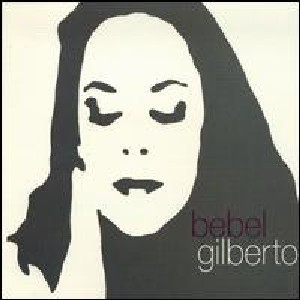
Bebel Gilberto is the daughter of Brazilian jazz goddess Astrud Gilberto, and she follows in her mother’s footsteps wonderfully.
On Tanto Tempo, she enlists some of electronic music’s luminaries (Amon Tobin, Arling & Cameron, Suba, Smoke City, Thievery Corporation) to help out with her own compositions as well as some Brazilian classics (“So Nice,” “Bananeira”).
Through it all, Gilberto’s beautiful alto floats atop the tracks. Her duet with Nina Miranda on “August Day Song” is absolute bliss, with their voices forming a wonderful counterpoint. The featured cut here is the opener “Samba de Benção”.
Forget the pretenders: this is real Brazilian music done by one of the best.
Guru 'Jazzmatazz, Vol. 1'
Posted April 23rd, 2010 by kevster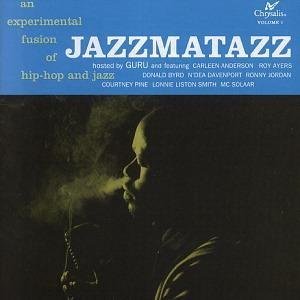
Though it can reasonably be argued that rap grew almost directly out of funk and its particular beat, there are a lot of overlaps with jazz, particularly the bop and post-bop eras: the uninhibited expression, the depiction of urban life, just to name two.
Jazz samples have also had a large role in hip-hop, but the idea of rapping over actual live jazz wasn't truly fully realized until Gang Starr MC Guru created and released the first in his Jazzmatazz series in 1993, with guest musicians who included Branford Marsalis, Donald Byrd, Roy Ayers, Ronny Jordan, and Lonnie Liston Smith.
While Guru's rhymes can occasionally be a little weak ("Think they won't harm you? Well they might/And that ain't right, but every day is like a fight" are the lines he chooses to describe kids on the subway in Brooklyn in "Transit Ride"), he delves into a variety of subject matter, from the problems of inner-city life to his own verbal prowess to self-improvement without ever sounding too repetitive, and his well-practiced flow fits well with the overall smooth, sultry, and intelligent feel of the album.
From Jordan's solo on "No Time to Play" to Ayers' vibes expertise on "Take a Look (At Yourself)", Jazzmatazz, Vol. 1 is a rap album for jazz fans and a jazz album for rap fans, skillful and smart, clean when it needs to be and gritty when that's more effective, helping to legitimize hip-hop to those who doubted it, and making for an altogether important release.
R.I.P. Guru
Erland and the Carnival 'Erland and the Carnival'
Posted April 22nd, 2010 by kevster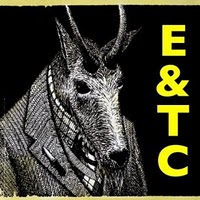
There's not much more British than slightly freaky folk music. As if to prove the point, Erland Cooper (along with Simon Tong (Verve, Blur) and (drummer from The Fireman) David Nock) has mined these pleasant pastures for a debut album of depth and weird beauty.
Together, they've taken various bits of existing poetry, lyrics, folk tales and songs, and melded them together with their own organs, guitars and lyrics. The result is a collection of engaging, swirling tracks and stories that sound like the soundtrack to a creepy, dreamy funfair.
The best example of this is The Derby Ram – an update of the traditional ballad about the giant ram which got the city its emblem.
Elsewhere, William Blake's verse The Echoing Green is set to a hypnotic offbeat guitar part that Cooper hides his voice behind. Leonard Cohen's return-to-libido poem Disturbed This Morning is given a curious reworking that makes it more wanderlust than old-man lust, and My Name Is Carnival (featured here) a cover of a track by tragic 60s folk singer Jackson C Frank (which gives the band their name) is a buxom, jazzy, introduction to the Carnival's shtick.
It's a curiosity alright, one you can file next to similarly interesting backwards-looking modern bands like The Decemberists, The Coral and Mystery Jets.
A freakbeat take on sample culture.
 Under The Influence
Under The Influence